The best early ripening variety, according to summer residents, is the “King of the Early” tomato: why it’s so good and why it’s worth growing
Early tomato crops are welcome guests in all garden plots, as they have time to ripen in any region, even in areas with cold and short summers. But not all of them have the ability to successfully bear fruit in the northern regions.
In this article we will talk about the unique King of the Early tomatoes with incredible adaptation to greenhouse conditions and open ground. This is an excellent option for lovers of early-ripening tomatoes in all regions. Ripe vegetables, large and with excellent taste, are revered by many vegetable growers, planting the variety on their plots every year.
Characteristics and description of the variety
The variety was bred by Russian breeders 12 years ago, but is not included in the State Register of Selection Achievements. Recommended for breeding in the northern and central regions in greenhouse conditions, and in the southern regions in open ground.
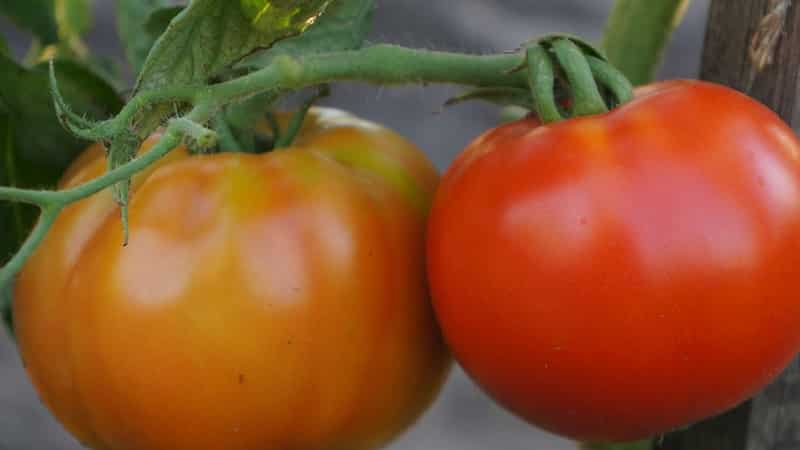
Distinctive features
Type determinant, standard, height 60-70 cm, the trunk is strong, the foliage is dense, the leaves are dark green, the inflorescences are simple.
Early ripening species, from the moment of sowing the seeds until full ripening, 85-90 days pass.
Productivity is high, up to 5 kg of fruits are collected from 1 seedling, provided that 3 plants are planted per 1 sq. m. The first fruits are the largest, weighing up to 500 g. The quantitative and qualitative indicators of fruiting are influenced by compliance with agricultural technology and crop rotation rules.
The culture does not have high immunity to diseases of the nightshade family. Therefore, timely implementation of preventive measures is necessary.
Attention! Despite the short stature, regular pinching and mandatory garter are required. It is often necessary to take stepson due to the large number of growing side shoots.
Fruit characteristics
Average weight 200-280 g, round shape, bright red color. The taste is excellent, sweet with a barely noticeable sourness characteristic of tomatoes, the flesh is juicy and meaty. There are 7 seed chambers, a lot of seeds. The peel is thin, but durable and not prone to cracking.
Universal purpose: Excellent for preparing fresh dishes and for processing for winter preparations.
Ripe vegetables last a long time and can withstand long-distance transportation.
The photo shows the King of Early tomatoes.

How to grow seedlings
Sowing seeds for seedlings begins 2 months before planting in the ground. For planting, seed material can be prepared independently, since the tomato is varietal, which means it retains its parental properties in the next generation.
About other varieties of tomatoes:
Advantages and disadvantages of the Raspberry Elephant variety
Tasty, juicy and aromatic giant - the “Ox Heart” tomato
“Skorospelka” - a variety for a rich, tasty, early harvest of tomatoes
Seed preparation
Seeds are carefully inspected for visible damage., placing them one at a time on the table. They are then checked for emptiness in the saline solution. The solution is prepared from 1 spoon of salt dissolved in a glass of water. Those grains that float to the surface are not suitable for sowing.
Seed material must be disinfected, especially one that is assembled independently.Disinfection will not only strengthen the immunity of sprouts, but will also identify non-viable plants at the initial stage. For disinfection, prepare a weak solution of potassium permanganate and place the seeds in it for 20 minutes. Afterwards they are thoroughly washed and dried.
Advice. To improve seedlings, growth stimulants or melt water are used, in which the seed is soaked for 12 hours. The swollen seeds are ready for sowing.
Container and soil
The royal tomato requires fertile and nutritious soil.. It is prepared from garden soil mixed with humus and peat. For lightness, add a little washed river sand. After thoroughly mixing all the components, the resulting mixture is poured with a hot solution of potassium permanganate to destroy pathogenic flora.
Disinfected soil has a beneficial effect on the growth and development of seedlings. Then the soil is laid out in planting containers, at the bottom of which small drainage holes are made. Also, sawdust or small pebbles are placed at the bottom of the containers as drainage.
You can plant both in a common wooden box and in individual containers, for example: plastic cups, peat pots, paper honeycombs. The most convenient way to propagate seedlings is in peat pots. When grown in these containers, replanting into beds is not required; seedlings are planted in holes along with peat pots. They dissolve in the soil, additionally feeding the young roots with useful substances.
Sowing
Seeds are sown to a depth of 1.5 cm with a distance of 2-3 cm from each other, sprinkle the top with soil, lightly moisten with warm, settled water using a spray bottle and cover the containers with film or glass to create a greenhouse effect.Until the first shoots, the planting containers are kept in a warm and bright room at a temperature of at least 25 °C. The film is periodically removed to ventilate the soil.
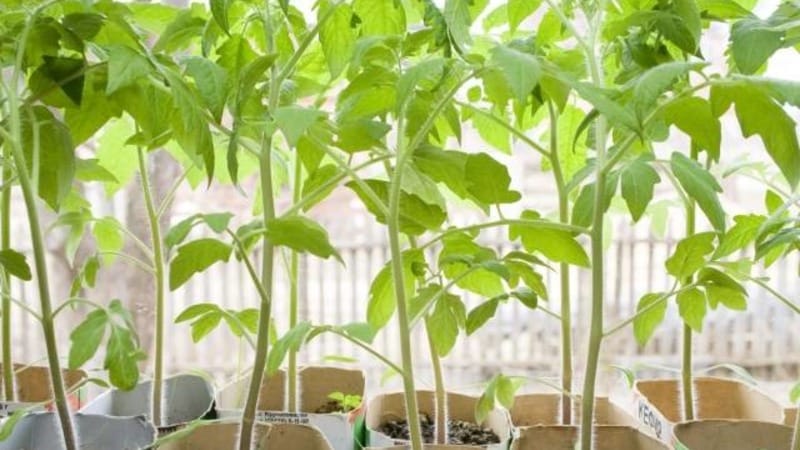
Seedling care
After emergence of shoots, the containers are rearranged in a well-lit place, on a windowsill.
Important! Seedlings must be provided with sufficient light. Otherwise, the stems of the sprouts will begin to stretch and the bushes will weaken.
Daylight hours for seedlings are 15-16 hours. If there is a lack of natural light, add phytolamps. Additional lighting must be taken care of in advance so that the first shoots immediately receive the required amount of light.
Water as the top layer of soil dries out, without flooding the sprouts, carefully use a shallow watering can along the edge of the nursery with warm, settled water. After watering, the soil is loosened superficially so as not to touch the young roots.
During the seedling period, liquid fertilizers are applied twice for young tomatoes. This feeding is necessary for the full formation of young plants.
After 2-3 true leaves appear, the seedlings dive, seating in separate containers. If the seedlings are left in a common box, then the distance between the bushes is increased to 10-15 cm.
Reference! Transplanting into separate containers is convenient for further transportation of seedlings to summer cottages.
2 weeks before planting, seedlings begin to harden. To do this, they are taken outside for 40 minutes - 1 hour. Gradually, the time spent outdoors is increased to 13 hours. Simultaneously with daytime hardening, the night temperature in the room is reduced to 13 °C.
How to grow tomatoes
After 2 months, the seedlings are ready for transplanting. They are transplanted into protected structures 2 weeks earlier than into open beds.The soil temperature is 15-17 °C. If the soil has not warmed up to this point, replanting should be delayed. In cold soil, seedlings will not grow, and the root system may suffer.
Landing
Planting scheme: 50-70 cm is the distance between seedlings, 70-90 cm is left between rows. For 1 sq. m place no more than 3 plants. Tomato branches are spreading, so it needs a lot of space. If the bushes are planted more densely, they will require more attention in the future.
Transplanted into pre-prepared holes 15-20 cm deep, at the bottom of which wood ash and a pinch of mineral fertilizers are first placed. After transplantation, the holes are compacted, watered with warm, settled water and left to adapt to the new conditions for 7-9 days.
Reference! During plant adaptation, they are not watered or fed.
Further care for the King of Early tomato
Regular watering is established no more than 2 times a week. If the crop is not watered for a long time or, conversely, the soil is over-moistened, then the fruits will crack when ripe. Water with warm water, at the root, in the morning or evening. The culture responds well to drip irrigation. To do this, place a regular plastic bottle without a bottom in the root zone and fill it with water, which gradually penetrates to the roots of the tomato.

After watering, loosen the ground and remove weeds with roots.. Removing weeds is an important step in tomato care. Bacteria, spores and many insect pests multiply in weeds. And since plants are poorly protected from fungal diseases, timely preventive measures are crucial. In addition, loosening ensures better penetration of oxygen to the roots, which strengthens and improves immunity.
To keep the beds moist longer, use mulching.. Peat, straw or sawdust serve as mulch. Mulching is also a protective measure: it protects bushes from insects living in the ground.
The variety requires feeding in large quantities.. Fertilize once every 2 weeks. With weak growth, the amount of fertilizing is increased, making priority with a predominant nitrogen content. Conventional fertilizers consist of a full range of mineral fertilizers or organic matter. As organic matter, use mullein infusion or bird droppings infusion in a ratio of 1:15.
Reference! It is not recommended to fertilize tomatoes with fresh manure, as this will provoke an increased growth of green mass.
On hot days, tomato bushes provide shade to avoid burns to the sheet plates.
Features of care and possible difficulties
Due to the large number of side shoots, determinate bushes require regular pinching. Unnecessary shoots not only create shade and prevent air penetration, but also take away a large amount of nutrients. It happens that too many ovaries form on fruit-bearing branches. If they are not removed, then all the vegetables will not be able to ripen.
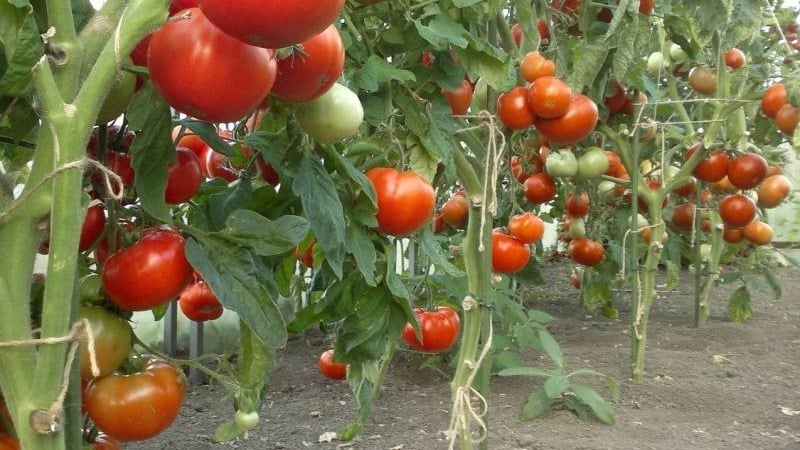
Despite the strong stems, the bushes require obligatory garter., otherwise the branches will break from the multitude of vegetables. In addition, the weight of the fruit bends the hands to the ground, which leads to contact with the ground. Ripening vegetables can rot and cause the spread of fungal infections.
Read also:
Diseases and pests
The Early King tomato variety is not resistant to fungal diseases. When planting this variety on your site, you need to take preventive measures in advance, for example, treat the beds with copper sulfate before planting tomatoes. It is also necessary to observe the temperature regime in greenhouses, regulating it by ventilating the premises, and do not forget about weeding the beds, timely and moderate watering and loosening.
For preventive purposes, use the drug "Fitosporin". The plants are sprayed with it three times a season. “Fitosporin” is used not only for prevention, but also for the treatment of diseased plants. You can replace it with the drugs “Barrier” or “Hom”.
The most dangerous pests are mole crickets, slugs and spider mites.. Spider mites live in greenhouse conditions and cause the main damage to greenhouse bushes. Regular ventilation destroys the pest’s usual habitat, but if there is a lot of it, then you cannot do without using more effective methods. The mite is destroyed either with the Karbofos insecticide or the affected plants are sprayed with an infusion of garlic and pepper.
Save from mole crickets fish heads dug into the beds and crushed cloves of garlic - pungent odors repel mole crickets.
Used against slugs ground pepper or lime solution, which is used to water the holes. Treating the stem with soapy water also helps.
Nuances for open and protected ground
It’s not worth saving space on the site and planting tomato bushes too densely., since difficult care will be required in the future. It is necessary to constantly tear off the lower leaves and lateral shoots, otherwise the plants will not receive enough light and nutrients.

Dense plantings require more frequent feeding, once every 10 days.. Fertilizers consisting of a full complex of mineral fertilizers are alternated with organic matter. From organic matter, diluted mullein infusion or bird droppings are used.
Greenhouse plants grow slightly taller than outdoor plants, but pinching the crown is not required: they finish themselves.
Reference! Termination is the cessation of growth after the formation of a certain number of branches.
Vegetables are prone to cracking when underwatered and overripe.. But you shouldn’t allow the beds to become waterlogged either - this leads to the development of fungal diseases. The best solution to the problem is drip irrigation and mulching of the beds. These agricultural practices will help avoid excess and lack of moisture.
Harvesting and application
Vegetables ripen early, one of the first among all tomatoes. The main thing is to collect them in time so that the fruits do not have time to crack. In addition, timely release of excess weight from the bushes allows the next tomatoes to ripen faster.
Universal purpose: tomatoes are used for preparing fresh dishes, for example: salads, freshly squeezed juices, stews, purees. Smaller tomatoes are used for pickling, canning and marinades, and are processed into tomato products. They make excellent pasta, adjika, and ketchup.
Ripe vegetables tolerate long-term storage well and transportation without loss of presentation.
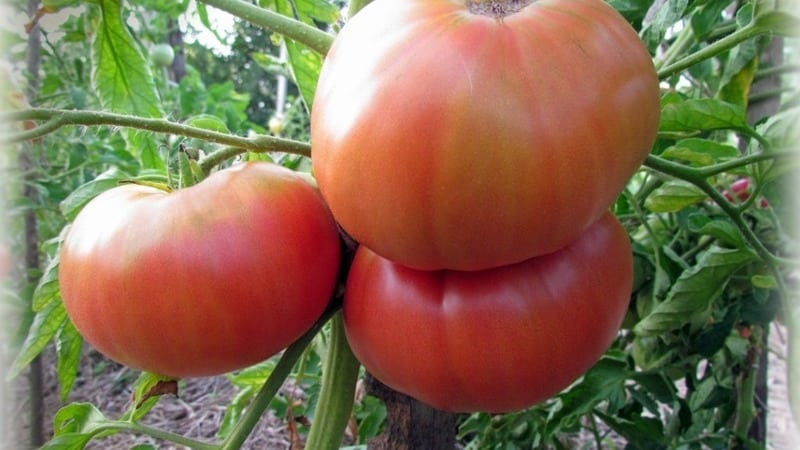
Advantages and disadvantages
Let's look at some advantages of this variety:
- simple agricultural technology;
- high productivity;
- small height;
- early ripening;
- ability to settle down in any region;
- excellent taste of fruits;
- versatility in cooking;
- long storage;
- long transportations.
Negative characteristics include:
- obligatory garter;
- regular stepsoning;
- systematic mandatory feeding;
- average resistance to diseases.
Farmer reviews
Despite some nuances in care, the variety remains a favorite early tomato for many gardeners. Here are some opinions:
Elizaveta, Smolensk: “I’ve been growing this variety for a long time. Of course, you need to look after him, but the result is worth it. Large tasty vegetables that ripen early. All the bushes are literally hung with tomatoes. To prevent pests from attacking, I treat them with insecticides.”.
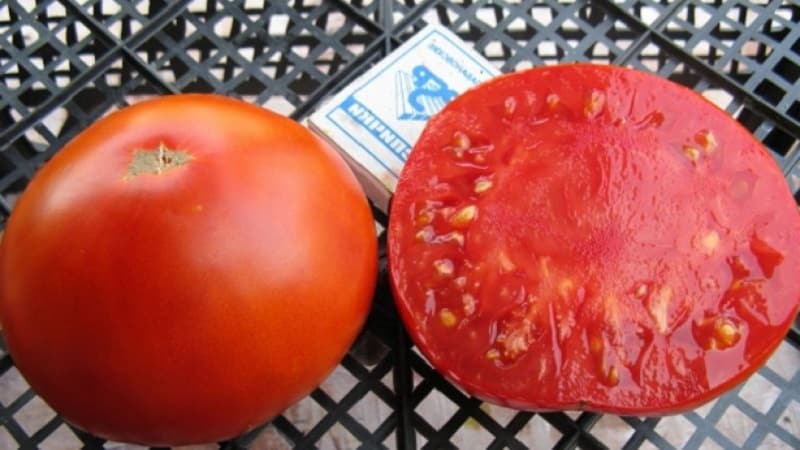
Antonina, Slantsy: “I love working in the garden, so the royal tomato always produces a good harvest. The first fruits are large, weighing half a kilogram. Then they go smaller, and I put the last ones in jars for the winter. I plant the seedlings in the largest greenhouse, there is plenty of space for them. I recommend it to anyone who likes to take care of plants, this is a very rewarding species.”.
Conclusion
The Early King variety is an excellent option for lovers of early tomatoes. Of course, the culture is not for the lazy, but there are no particular difficulties in caring for it. If you follow the rules of crop rotation and competent agrotechnical practices, the plant will reward you with large tomatoes of excellent taste. Moreover, the early-ripening and high-yielding species has the ability to adapt to any climatic conditions, which makes it possible to grow early tomatoes in cold regions.